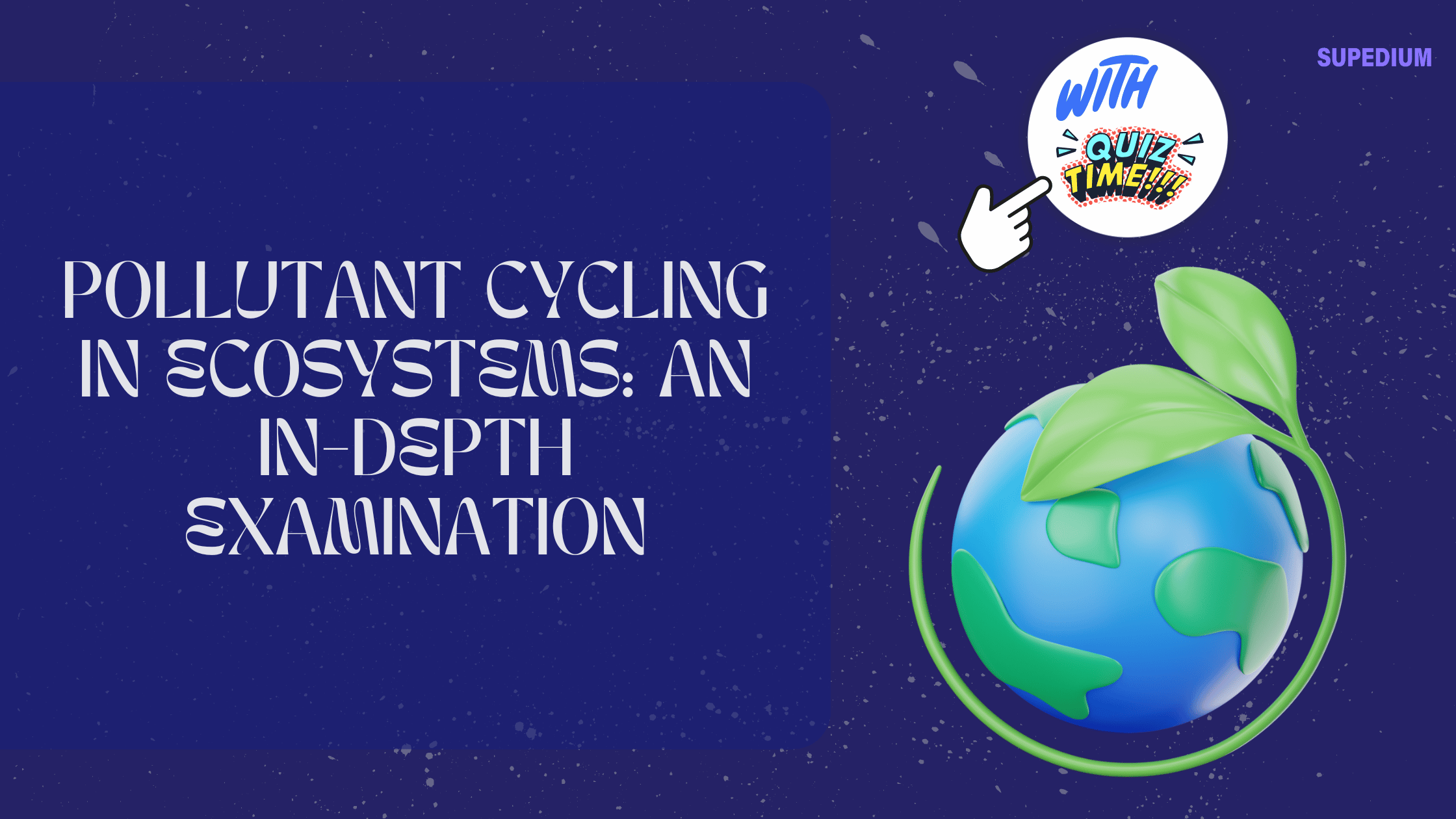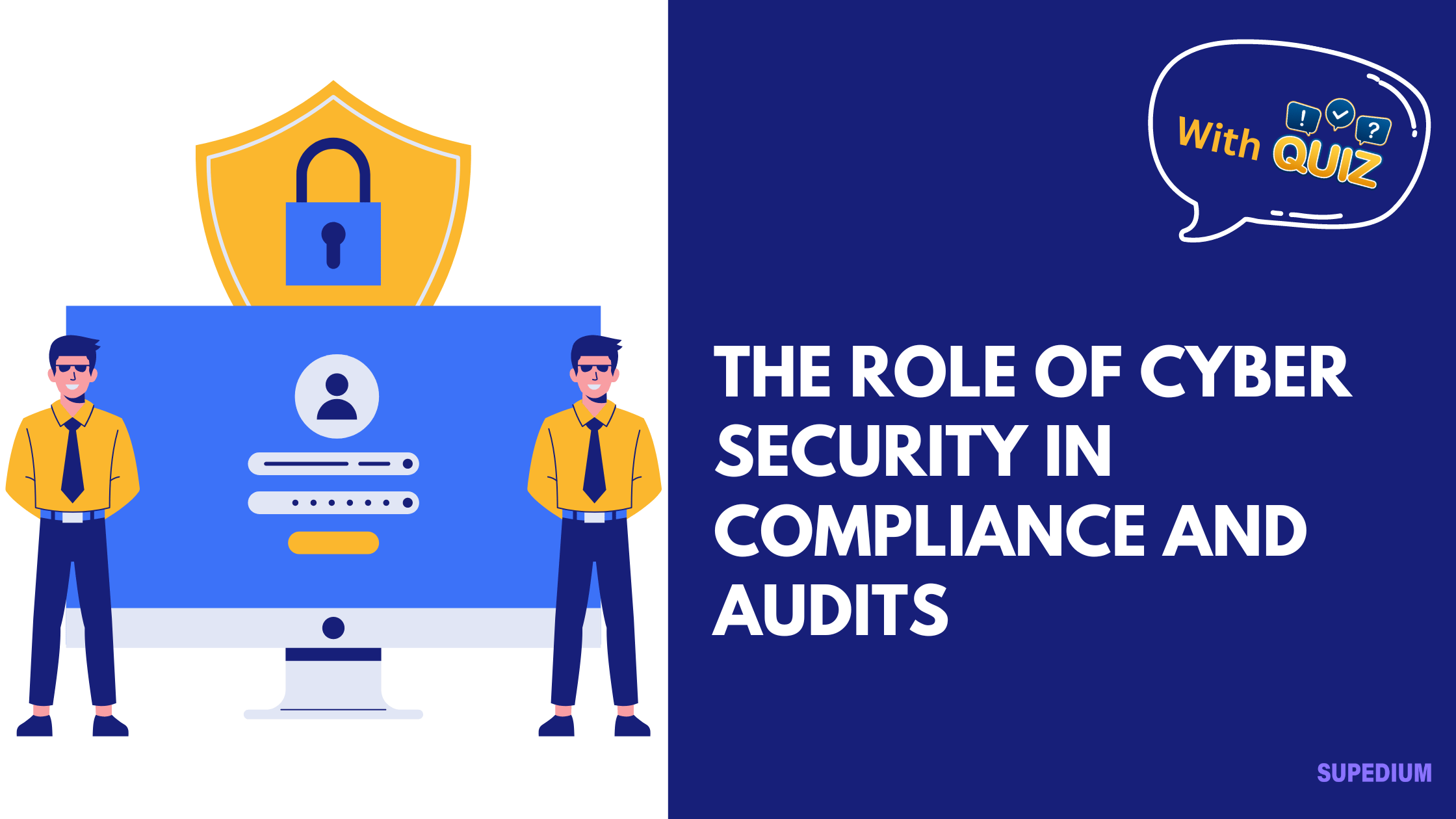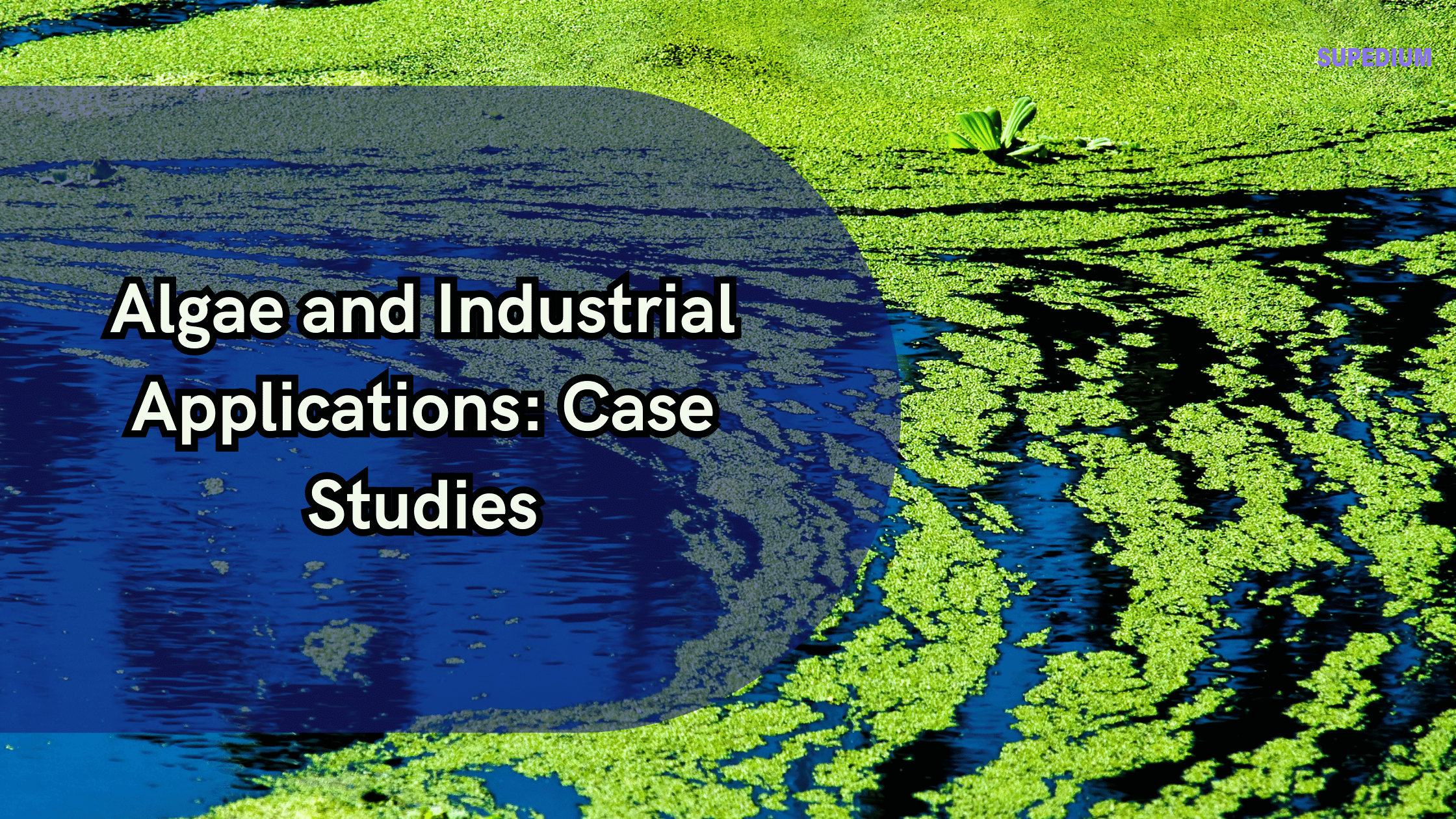Table of Contents
![]()
I. Introduction
Pollutant cycling refers to the movement and transformation of pollutants within different components of an ecosystem. Pollutants are substances that, when introduced into the environment, can cause adverse effects on organisms and ecological processes. Understanding pollutant cycling is crucial for environmental health, biodiversity preservation, and human well-being. This article delves into the types of pollutants, their cycling mechanisms, impacts on ecosystems, and strategies for mitigation and management.
II. Types of Pollutants
A. Chemical Pollutants
- Heavy Metals: These include elements like lead, mercury, and cadmium. Heavy metals are persistent in the environment and can accumulate in living organisms, leading to toxic effects. Lead, for example, can cause neurological damage in both humans and wildlife.
- Persistent Organic Pollutants (POPs): Chemicals such as polychlorinated biphenyls (PCBs) and dichlorodiphenyltrichloroethane (DDT) are resistant to environmental degradation. They can travel long distances, accumulate in the fatty tissues of animals, and disrupt endocrine systems.
- Nutrient Pollutants: Nitrogen and phosphorus, while essential for plant growth, can cause environmental issues when present in excess. They contribute to eutrophication, leading to algal blooms and hypoxic conditions in aquatic systems.
- Toxic Elements and Compounds: Substances like asbestos and dioxins are hazardous to health and can persist in the environment for long periods. Asbestos, for example, is linked to respiratory diseases, while dioxins can cause cancer and reproductive issues.
B. Physical Pollutants
- Plastics and Microplastics: Plastics, particularly single-use items and microplastics, are pervasive pollutants in terrestrial and aquatic environments. They can entangle wildlife, be ingested by organisms, and release toxic chemicals.
- Sediments and Soil Erosion: Excess sediment from erosion can smother aquatic habitats, reduce light penetration, and alter nutrient dynamics. This impacts aquatic organisms and overall ecosystem health.
C. Biological Pollutants
- Pathogens: Bacteria, viruses, and other microorganisms can contaminate water sources and soil, leading to disease outbreaks in humans and animals.
- Invasive Species: Non-native species can outcompete indigenous organisms, disrupt ecosystem functions, and alter nutrient cycling.
III. Pollutant Cycling Mechanisms
A. Atmospheric Cycle
- Emission Sources: Pollutants are released into the atmosphere from various sources, including industrial activities, vehicle exhaust, and agricultural practices.
- Transport and Dispersion: Once emitted, pollutants are transported by wind and atmospheric currents, spreading them over large areas.
- Deposition: Pollutants can return to the Earth’s surface through processes such as acid rain, where sulfur and nitrogen compounds form acids and fall as precipitation.
- Atmospheric Reactions and Transformations: Pollutants can undergo chemical transformations in the atmosphere. For instance, nitrogen oxides can react with sunlight to form ozone, a harmful air pollutant.
B. Hydrological Cycle
- Pollutant Entry: Pollutants enter water bodies through runoff, leaching from soils, and direct discharges from industries or wastewater.
- Movement through Water Bodies: Pollutants can be transported by rivers, lakes, and oceans. Their movement depends on water flow, chemical properties, and interactions with sediments.
- Biodegradation and Chemical Transformation: In aquatic environments, pollutants can be broken down by microorganisms or undergo chemical changes, influencing their toxicity and persistence.
- Accumulation in Sediments: Pollutants can settle in sediments, where they may remain for extended periods. Sediment-bound pollutants can be resuspended, affecting water quality and biological health.
C. Soil Cycle
- Pollutant Deposition and Uptake: Pollutants can be deposited on soils through atmospheric deposition or direct application. Plants can absorb these pollutants from the soil.
- Soil-Plant Interactions: Pollutants in the soil can affect plant growth and health. For example, heavy metals can inhibit nutrient uptake and plant development.
- Soil Microbial Activity and Decomposition: Soil microbes play a role in breaking down organic pollutants. However, certain pollutants can be toxic to these microorganisms, disrupting decomposition processes.
- Soil Erosion and Runoff: Erosion can transport polluted soil to water bodies, exacerbating water pollution issues and impacting aquatic ecosystems.
D. Biological Cycle
- Bioaccumulation in Trophic Levels: Pollutants can accumulate in the tissues of organisms through the food chain. For example, mercury can build up in fish tissues and subsequently affect predators.
- Biomagnification in Food Webs: As pollutants move up the food chain, their concentrations can increase, posing risks to top predators, including humans.
- Impact on Organisms: Pollutants can cause various health issues, including reproductive failures, developmental abnormalities, and increased mortality rates.
- Transfer through Food Chains: Pollutants can be transferred between organisms, impacting entire ecosystems. For instance, pollutants in aquatic systems can affect fish, birds, and mammals.
IV. Impacts of Pollutants on Ecosystems
A. Effects on Flora
- Growth and Productivity: Pollutants can hinder plant growth by affecting photosynthesis, nutrient uptake, and overall health.
- Photosynthesis and Nutrient Uptake: Certain pollutants can block sunlight or interfere with nutrient absorption, reducing plant productivity and ecosystem function.
- Plant Health and Survival: Pollutants can lead to increased susceptibility to diseases and pests, affecting plant survival and ecosystem stability.
B. Effects on Fauna
- Health and Development: Pollutants can cause health issues in animals, including developmental disorders and diseases.
- Reproductive Success: Exposure to pollutants can affect reproductive health, leading to reduced offspring survival and population declines.
- Behavioral Changes: Pollutants can alter animal behavior, including feeding patterns, migration routes, and social interactions.
C. Ecosystem Function and Services
- Soil Fertility and Water Quality: Pollutants can degrade soil quality and water purity, impacting agricultural productivity and ecosystem health.
- Pollination and Biodiversity: Pollutants can affect pollinators, leading to declines in plant reproduction and overall biodiversity.
- Carbon Sequestration: Ecosystem processes like carbon sequestration can be disrupted by pollutants, affecting climate regulation.
V. Case Studies
A. Heavy Metal Contamination
- Mercury in Aquatic Ecosystems: Mercury contamination from industrial activities has led to widespread ecological and health problems, particularly in fish and aquatic birds.
- Lead Contamination in Urban Areas: Lead pollution from sources like old paint and gasoline has had significant impacts on human health and urban wildlife.
B. Nutrient Pollution
- Eutrophication in Freshwater Systems: Excess nitrogen and phosphorus lead to algal blooms, oxygen depletion, and fish kills in lakes and rivers.
- Dead Zones in Marine Environments: Coastal areas with high nutrient loads can develop hypoxic conditions, creating dead zones where marine life cannot survive.
C. Plastic Pollution
- Microplastic Impact on Marine Life: Microplastics are ingested by marine organisms, leading to physical and chemical health issues.
- Terrestrial Plastic Debris and Soil Health: Plastic debris can alter soil properties, affecting plant growth and soil microorganisms.
VI. Mitigation and Management Strategies
A. Pollutant Reduction and Prevention
- Policy and Regulation: Legislation such as the Clean Air Act and Clean Water Act aims to reduce pollutant emissions and protect environmental quality.
- Technological Innovations: Advances in pollution control technologies, such as catalytic converters and wastewater treatment systems, help reduce emissions and discharges.
- Sustainable Practices: Adopting green chemistry, reducing waste, and implementing best practices in agriculture can minimize pollutant release.
B. Remediation and Restoration
- Soil and Water Remediation Techniques: Techniques such as soil washing, bioremediation, and phytoremediation are used to clean contaminated sites and restore environmental quality.
- Bioremediation and Phytoremediation: Utilizing microorganisms and plants to degrade or accumulate pollutants can effectively reduce contamination levels.
- Ecosystem Restoration Projects: Restoring natural habitats and ecosystems can help mitigate the impacts of pollution and support ecological recovery.
C. Monitoring and Assessment
- Environmental Monitoring Techniques: Methods such as sampling, remote sensing, and analytical testing are used to track pollutant levels and assess environmental health.
- Risk Assessment and Management Plans: Evaluating potential risks and developing management plans help address pollutant impacts and ensure effective responses.
- Public Awareness and Education: Raising awareness about pollution issues and promoting education can drive community action and support environmental protection efforts.
VII. Future Directions and Research Needs
A. Emerging Pollutants and New Challenges
- Nanoparticles and Pharmaceuticals: The environmental impact of nanoparticles and pharmaceutical residues requires further study to understand their effects and develop mitigation strategies.
- Climate Change Interactions: Climate change can influence pollutant cycling, potentially altering pollution patterns and ecosystem responses.
B. Advancements in Monitoring Technologies
- Remote Sensing and Drones: These technologies offer new ways to monitor pollutants over large areas and in real-time.
- Improved Analytical Methods: Advances in analytical techniques enhance the detection and quantification of pollutants, improving environmental assessment capabilities.
C. Interdisciplinary Approaches
- Integrating Ecology, Chemistry, and Policy: Collaborative approaches that combine ecological, chemical, and policy perspectives can address complex pollution issues more effectively.
- Collaborative Research and Global Initiatives: International cooperation and research efforts are crucial for tackling global pollution challenges and developing sustainable solutions.
VIII. Conclusion
Pollutant cycling in ecosystems is a multifaceted issue with significant implications for environmental and human health. By understanding how pollutants move through ecosystems and their impacts on flora, fauna, and ecosystem services, we can develop more effective strategies for pollution management and mitigation. Continued research, technological advancements, and interdisciplinary collaboration are essential for addressing the challenges posed by pollutants and ensuring a healthier environment for future generations.






Be the first to comment